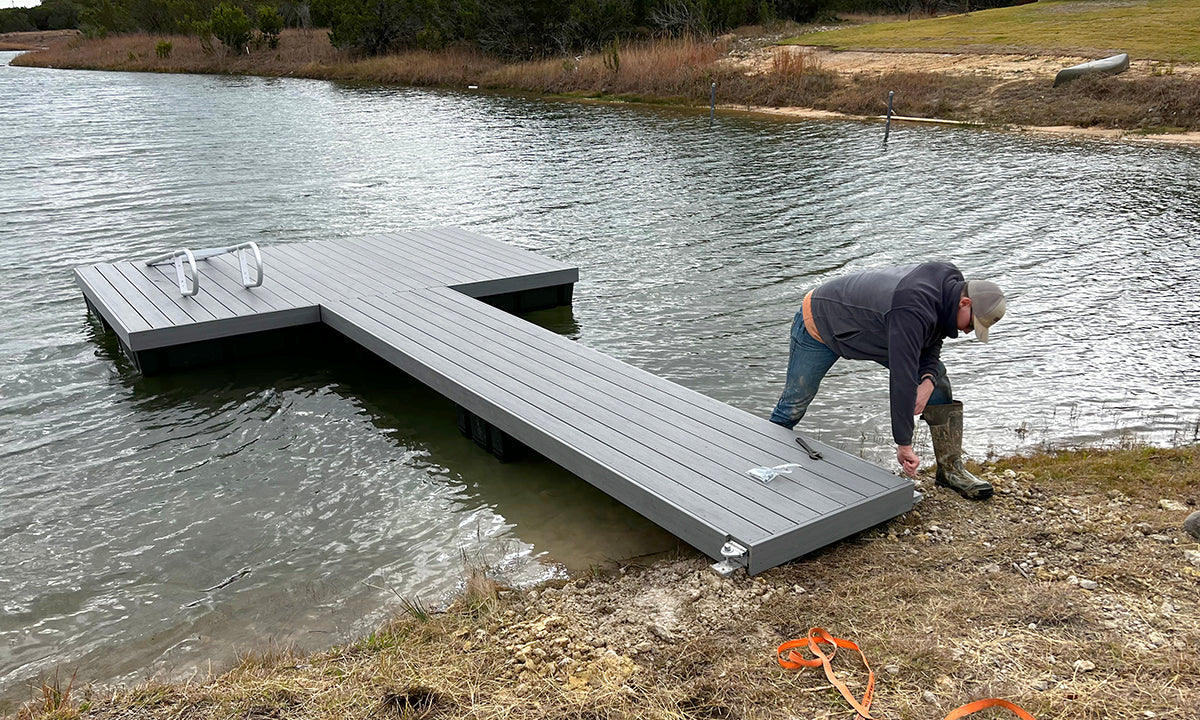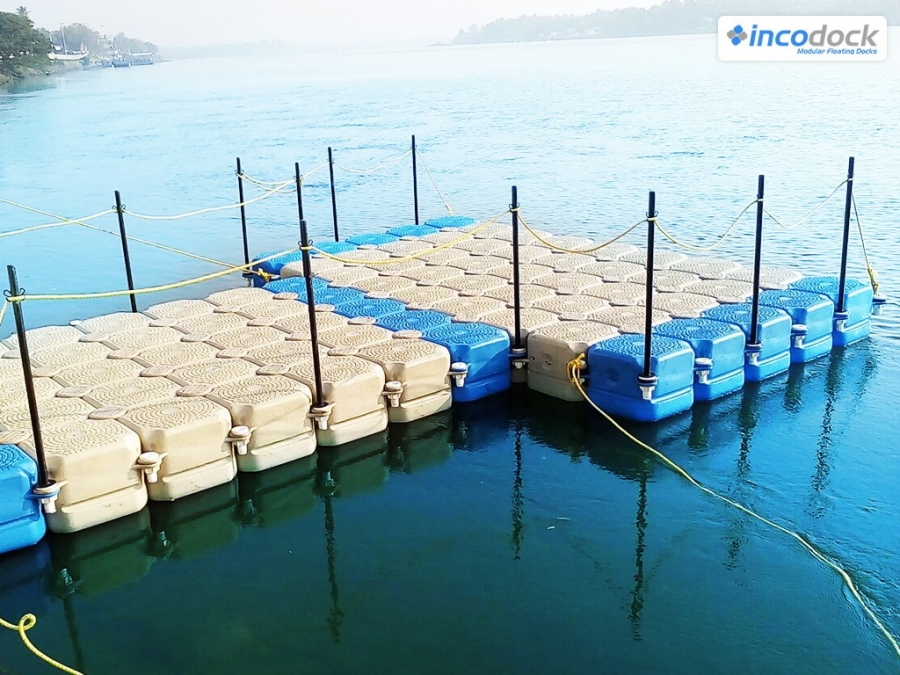Crafting Custom Solutions: Why a Floating Dock Builder is Important for Special Requirements
Crafting Custom Solutions: Why a Floating Dock Builder is Important for Special Requirements
Blog Article
Create the Perfect Docking Option With Floating Docks
Floating docks present a versatile option for a variety of maritime requirements, adapting flawlessly to fluctuating water levels and varied vessel types. As we check out the vital elements that add to the performance of floating docks, several vital variables pertaining to security and upkeep will emerge, raising inquiries about just how to enhance your docking experience.

Advantages of Floating Docks
Floating docks offer countless advantages that make them an optimal choice for different maritime applications. One of the primary benefits is their flexibility to transforming water levels. Unlike taken care of docks, floating docks fluctuate with the tide, ensuring constant access for vessels. This function is particularly vital in locations vulnerable to substantial tidal changes or seasonal water degree modifications.
In addition, floating docks are typically simpler and quicker to set up contrasted to typical fixed frameworks. Their modular design permits simple setting up and disassembly, facilitating upkeep and relocation when required. This adaptability is specifically valuable for momentary applications or in environments where problems might transform.
Floating docks likewise have a tendency to be extra eco-friendly, as they reduce interruption to the seabed and surrounding aquatic communities. Their buoyant nature lowers the danger of damages to aquatic life, advertising a much healthier atmosphere. In addition, these docks can be customized to fit numerous vessel dimensions, guaranteeing that they fulfill particular functional requirements - floating docks.
Inevitably, the mix of flexibility, convenience of setup, and ecological factors to consider makes floating docks a highly efficient option for a vast array of maritime requirements.
Choosing the Right Products
Selecting the appropriate products for floating docks is critical to guarantee resilience, security, and longevity. The selection of materials directly influences the dock's efficiency in various environmental problems, including exposure to water, sunshine, and possible wear from marine traffic.
Common materials utilized for floating docks consist of light weight aluminum, wood, and high-density polyethylene (HDPE) Light weight aluminum is light-weight, corrosion-resistant, and needs minimal maintenance, making it an excellent selection for longevity. Its preliminary expense can be greater compared to other materials.
Timber, while cosmetically appealing and offering a traditional look, can be prone to rot and bug damage if not appropriately dealt with. Consequently, making use of pressure-treated timber or normally resilient types like cedar or redwood can alleviate these concerns.
HDPE is a prominent choice because of its resistance to UV rays and chemicals, along with being eco-friendly. dock company. It is light-weight and available in various colors, allowing for customization
Ultimately, the best product option will certainly depend upon particular demands, consisting of budget, preferred appearances, and environmental factors to consider. Cautious examination of these variables will certainly result in a effective and resilient floating dock option.
Style Considerations for Stability
When designing floating docks, ensuring security is a fundamental aspect that can considerably affect their capability and security. Security in floating dock design is affected by different aspects, including buoyancy, weight circulation, and the setup of parts.
Weight circulation is important; uniformly distributing loads throughout the dock protects against turning and improves security. Broader styles can supply enhanced security, specifically in rough water conditions, while longer docks might require added assistances to protect against sagging.
One more vital look here factor to consider is the environmental impact, consisting of wave action and wind. Incorporating functions such as sidewalls or skirting can assist minimize the results of environmental pressures, preserving stability in adverse problems. Inevitably, a mix of thoughtful design, product option, and understanding of ecological factors will generate a drifting dock that fulfills both security and security needs.
Installation Tips and Strategies

Following, protect the necessary licenses and stick to regional guidelines, which may dictate installation techniques and environmental factors to consider. If needed, involve a qualified professional experienced in floating dock installments. Use premium products created for aquatic atmospheres to boost toughness and durability.
When placing the dock, straighten it parallel to the shoreline to promote very easy access. Make certain that the anchoring system is robust, utilizing cinder block or helical anchors to stabilize the dock against wind and wave activity. It's crucial to account for seasonal water level changes, including possible ice motion in colder environments.
During the setup, ascertain the dock's floatation and stability before wrapping up the anchoring. Routinely examine the installment for any indicators of wear or damage. By adhering to these suggestions and techniques, you can achieve a secure, useful, and aesthetically pleasing floating dock setup that satisfies your needs.
Maintenance and Care Standards
Preserving and caring for floating docks is important to prolonging their life-span and making sure risk-free use. Normal examinations should be conducted to identify any kind of indicators of wear, damages, or aquatic development. Seek splits, loosened fittings, or tarnished areas on the dock's surface, as these problems can compromise structural integrity.
Cleaning is important. Make use of a stress washing machine to eliminate algae, barnacles, and particles, which can build up gradually. For stubborn growth, take into consideration eco pleasant cleaning representatives that will not hurt aquatic life.
In addition, check the mooring lines and supports often to guarantee they are secure and cost-free from corrosion. Change any type of torn or harmed lines without delay to preserve security.
During severe weather condition, such as storms or freezing conditions, take precautionary actions. Secure the click for info dock with added mooring lines and, if feasible, eliminate any detachable parts to stop Continue damages.
Final Thought
In final thought, the implementation of floating docks presents a effective and flexible docking option suitable for different maritime applications. With appropriate setup and routine upkeep, floating docks can supply dependable and effective docking experiences for a large array of vessels.
As we discover the essential aspects that contribute to the performance of floating docks, a number of essential elements pertaining to stability and maintenance will certainly emerge, elevating concerns concerning just how to maximize your docking experience. Unlike dealt with docks, floating docks rise and autumn with the tide, guaranteeing constant availability for vessels.When making floating docks, ensuring stability is an essential element that can considerably impact their capability and safety. Stability in floating dock layout is influenced by different elements, including buoyancy, weight circulation, and the setup of components. Ultimately, a mix of thoughtful design, material choice, and understanding of ecological elements will generate a floating dock that satisfies both stability and safety demands.
Report this page